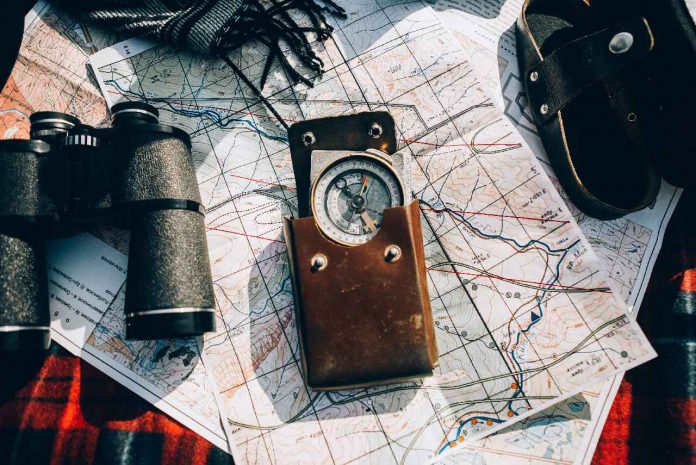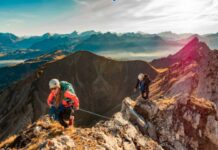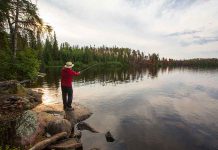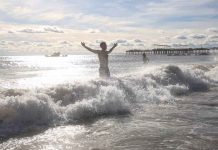Solo travel has been on an upward trend, with more adventurers seeking the freedom and personal growth that comes from exploring the world on their own terms. This increase in solo expeditions has highlighted the need for specialized outdoor gear for solo travel. Gear that is lightweight, compact, and multifunctional is not just a luxury but a necessity for the solo traveler, ensuring safety, comfort, and the ability to move freely without being weighed down by bulky equipment. The right gear can make the difference between a challenging trip and a transformative adventure.
Compact and Lightweight Gear Essentials
Travel-Friendly Canopy and Travel Sun Shades
A travel-friendly sun canopy or sun shade is essential for any solo traveler. These compact, lightweight solutions offer protection from the harsh rays of the sun, providing a haven whether you’re resting on a beach or setting up camp in a forest. The best travel sun canopy designs are easy to set up and pack down, offering immediate relief and comfort.
Compact Sleeping Systems for Solo Travelers
For the solo traveler, a good night’s rest is paramount. The evolution of compact sleeping systems has brought about lightweight, durable, and comfortable options. These systems, designed specifically for solo travel outdoor gear, range from ultra-light tents to inflatable sleeping pads and compact sleeping bags, all engineered to provide warmth in a variety of conditions without weighing down your backpack.
Multi-Use Tools and Gadgets
The mantra for solo travel gear is efficiency and space-saving. Multi-use tools and gadgets have become a cornerstone of solo outdoor gear, combining functionality in compact forms. Whether it’s a Swiss Army knife with multiple attachments, a cooking pot that doubles as an eating bowl, or a flashlight that serves as a power bank, these innovations allow solo travelers to carry less while doing more.
Water Purification Solutions
Access to clean water is a critical concern for solo travelers. Modern water purification solutions, like lightweight filters, offer effective and practical methods for ensuring water safety. These devices are essential components of solo travel outdoor gear, providing a reliable way to purify water from natural sources, and ensuring adventurers stay hydrated without the burden of carrying excessive water supplies.
UV Protective Gear for Healthy Adventures
Choosing the Right UV Protective Travel Gear
When selecting, the key is to look for items with a high UPF (Ultraviolet Protection Factor) rating. This rating indicates how effectively the fabric blocks out solar UV radiation. Apparel like long-sleeved shirts, pants, and hats made from materials with a UPF of 50 or higher can significantly reduce your skin’s UV radiation exposure. Additionally, integrating sun protection gear such as UV-blocking sunglasses helps protect your eyes, which are just as vulnerable to UV damage as your skin.
The Importance of High SPF Sunblock in Solo Travel
When embarking on solo travels, particularly in outdoor settings, one cannot overlook the significance of high SPF sunblock. To optimize sun protection during solo travels, consider the following guidelines:
- Choose Broad-Spectrum: Always look for sunblocks that offer broad-spectrum protection. These products are designed to shield your skin from both UVA and UVB rays, offering comprehensive coverage against the sun’s harmful effects. Broad-spectrum sunblocks ensure that you’re protected from immediate sunburn caused by UVB rays and the deeper skin damage caused by UVA rays, which can lead to premature aging and skin cancer.
- Water Resistance: For those engaging in water activities or expecting to perspire, opting for a water-resistant sunblock formula is crucial. Water-resistant options are formulated to maintain their efficacy in wet conditions, ensuring continuous protection even when you’re in and out of the water or sweating. This feature is particularly important for maintaining optimal skin protection during physical activities or hot and humid conditions.
- Reapply Regularly: No matter how high the SPF of your sunblock is, reapplication every two hours is necessary to maintain a consistent level of protection. After swimming or sweating, it’s essential to reapply more frequently, as water and perspiration can diminish the effectiveness of the sunblock’s protective barrier. Regular reapplication ensures continuous coverage and maximizes the sunblock’s protective benefits throughout your outdoor activities.
- Sensitive Skin Options: Individuals with sensitive skin should look for sunblocks formulated with mineral-based ingredients, such as zinc oxide or titanium dioxide. These ingredients are less likely to cause skin irritation compared to chemical sunscreens and provide effective protection by physically blocking UV rays from penetrating the skin. Mineral sunblocks are a gentler alternative for those with sensitive skin, offering strong UV protection without the risk of irritation.
- Don’t Forget Your Lips: The lips are often overlooked when applying sun protection, yet they are highly susceptible to sunburn. Using a lip balm with SPF protection is essential for preventing chapped and sunburned lips. Lip balms with SPF not only moisturize the lips but also provide a protective barrier against UV rays, ensuring comprehensive sun protection.
By incorporating these strategies into your sun protection routine, you can ensure that you’re well-protected from the sun’s harmful rays during any outdoor adventure. Selecting the right UV protective clothing and accessories, including broad-spectrum sunblock, and water-resistant formulas, reapplying regularly, choosing options suitable for sensitive skin, and protecting your lips, plays a crucial role in safeguarding your skin’s health, allowing you to enjoy great outdoors with peace of mind.
Technology-Enhanced Safety and Navigation Tools
GPS Devices and Apps
GPS devices and smartphone apps have become indispensable for the modern solo traveler, providing real-time location tracking, route planning, and navigational assistance. These tools help adventurers to traverse unknown terrains, find points of interest, and stay on course, all while minimizing the risk of getting lost.
Emergency Communication Devices for Remote Locations
For those venturing into remote or wilderness areas, maintaining the ability to communicate in case of an emergency is vital. To ensure you’re well-prepared for any situation, consider the following essential emergency communication devices for remote solo travel:
- Satellite Phones: These devices offer reliable voice and, in some cases, data communication capabilities by connecting directly to orbiting satellites instead of relying on terrestrial cell networks. Satellite phones are indispensable for explorers, adventurers, and workers in areas where cell service is non-existent.
- Personal Locator Beacons (PLBs): PLBs are compact, portable devices that, when activated in an emergency, transmit a distress signal and your location directly to search and rescue services via a dedicated satellite network. This one-way communication tool is designed for life-threatening situations where immediate rescue is needed. PLBs require no subscription service, making them a one-time investment for those who venture into remote wilderness areas, seas, or other places where immediate help may be needed.
- Satellite Messengers: These devices provide two-way text messaging capabilities and SOS alert features, functioning effectively in areas beyond the reach of cellular networks. Some models also offer navigation features, weather updates, and the ability to link with social media, enhancing both safety and convenience during off-grid adventures.
- Emergency Whistles: In scenarios where technological devices might fail or in close-range rescue situations, a loud, robust emergency whistle serves as a simple yet effective signaling tool. The sound of a whistle can carry further than the human voice, alerting rescuers or passersby to your location.
Incorporating these emergency communication devices into your gear can significantly enhance your safety and preparedness when venturing into remote or challenging environments. Each device offers unique benefits, from high-tech satellite connectivity to basic sound signals, ensuring that you have multiple options for reaching out for help in any situation.
As solo travel continues to grow in popularity, the gear we carry becomes a crucial component of our travel experience. Innovations in the market are making it easier and safer for individuals to explore the world on their terms. By staying informed about the latest trends and prioritizing gear that offers safety, comfort, and sustainability, solo adventurers can look forward to experiences that are not only fulfilling but also harmonious with the environments they explore.








